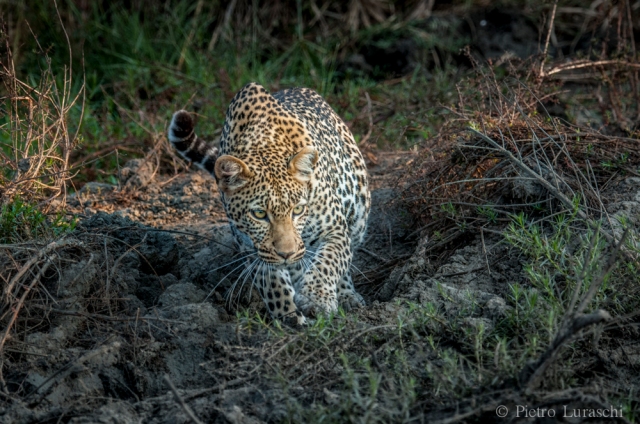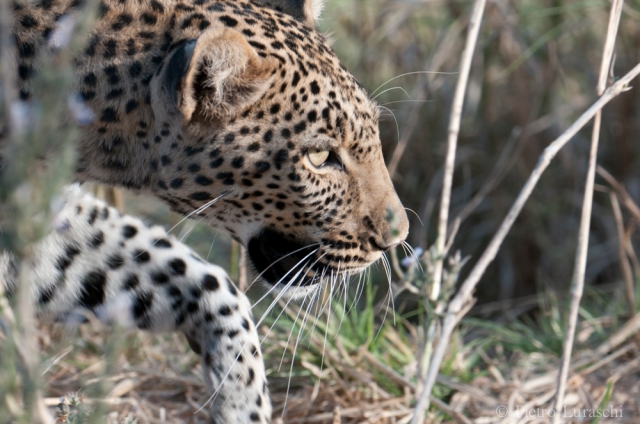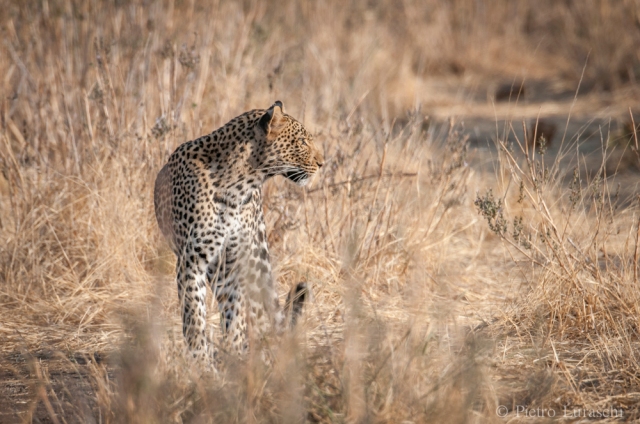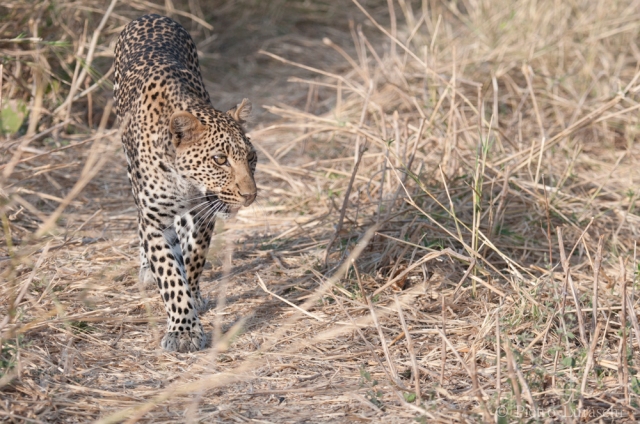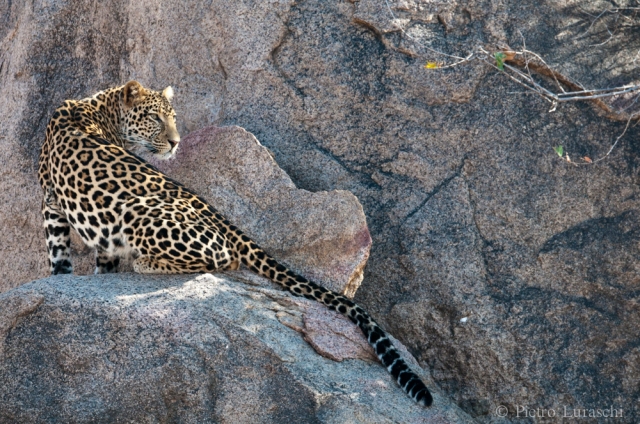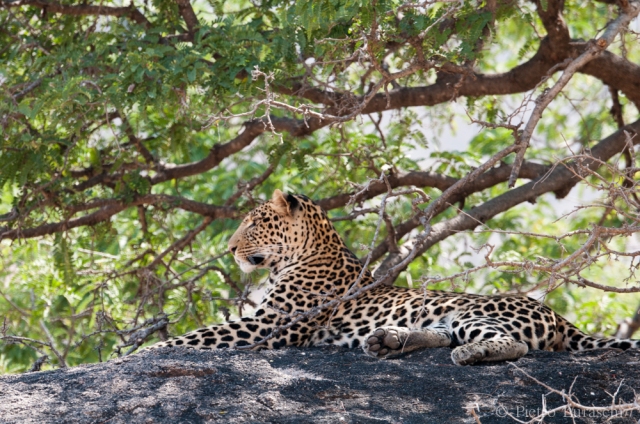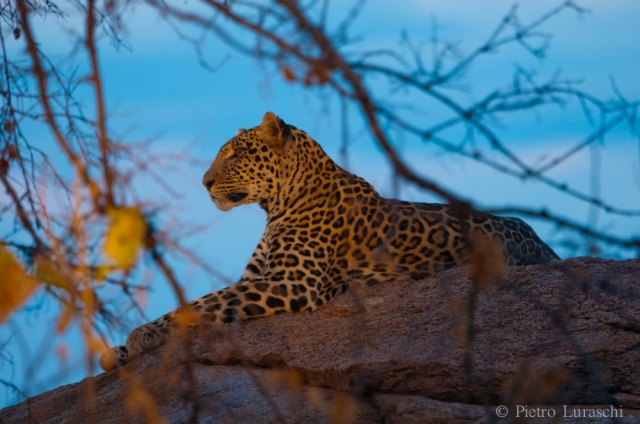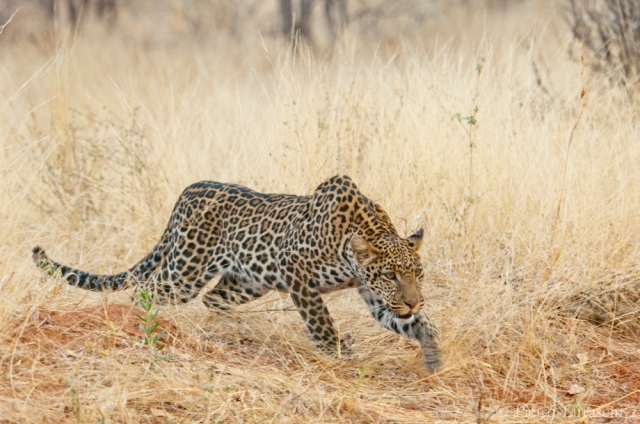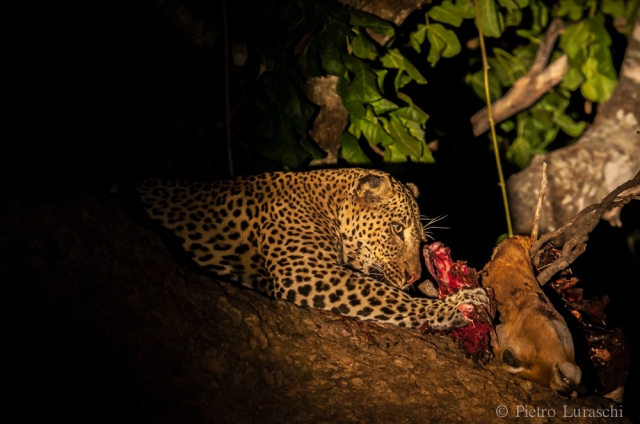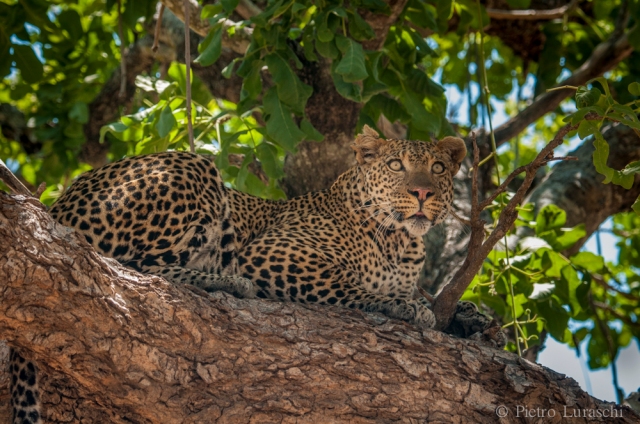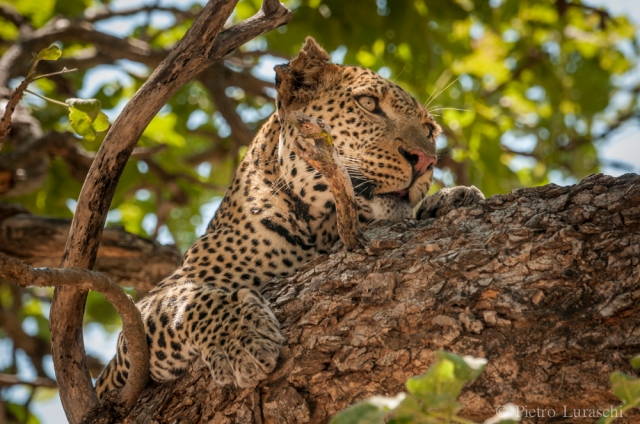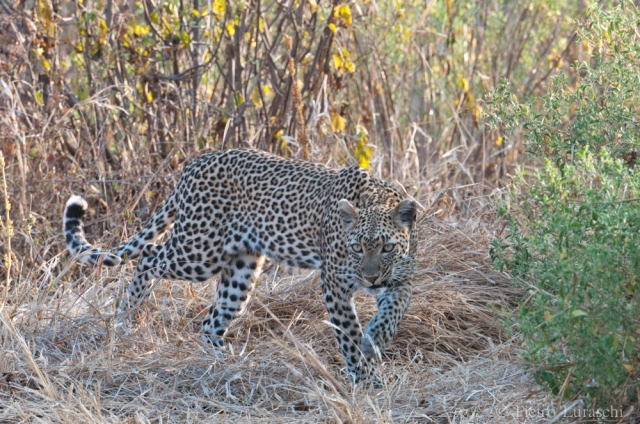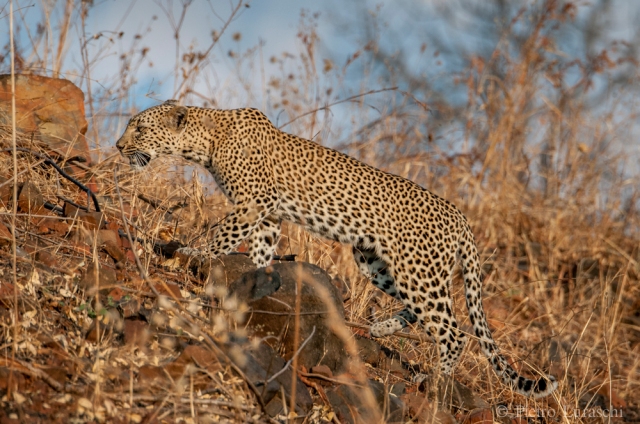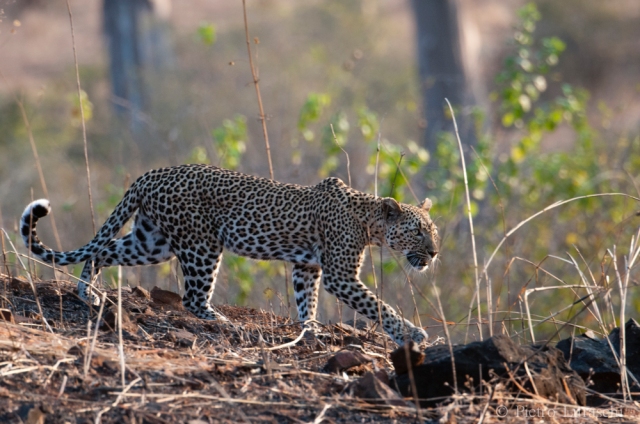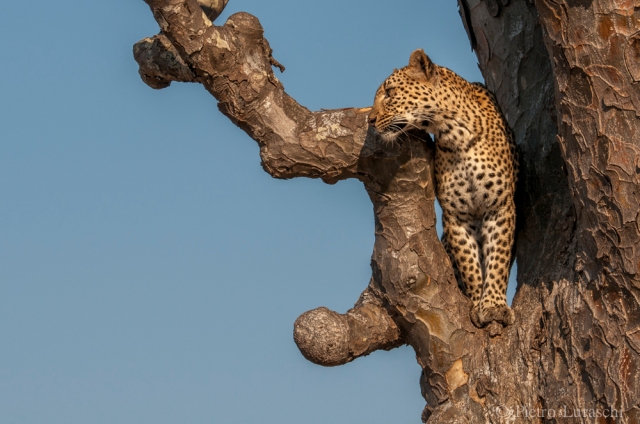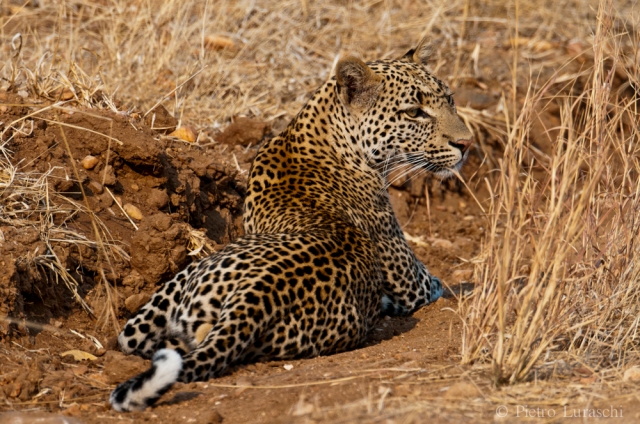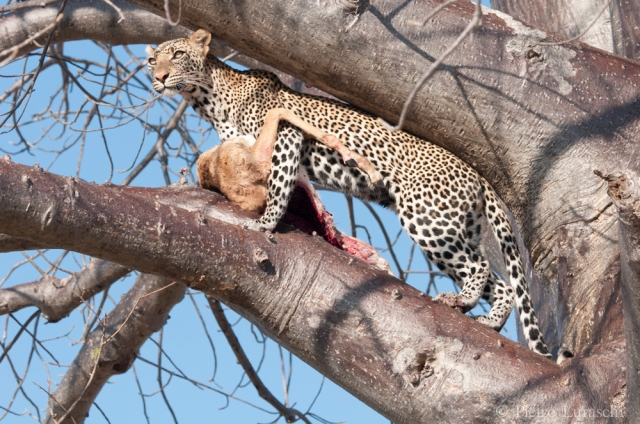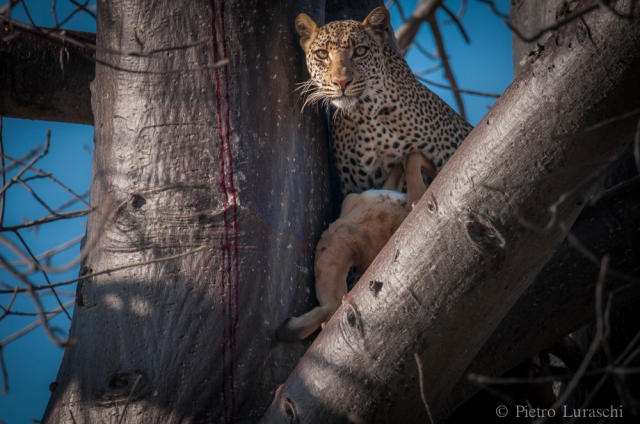Ruaha’s Spotted All-Stars
*** Important ***
From 1 March 2015 this website will not be live anymore.
With the launch of our new Asilia Blog all future blog articles about Rubondo Island can be found there.
We invite you to our new Asilia Blog here >
By Pietro Luraschi
Quintessential beauty, unforgettable elegance, striking power, heavenly grace and a perfect balance of many qualities: these are the words that come to my mind every time I see a leopard.
Every leopard has its own way and its own character: some are shy, allowing you just a glimpse of them, some are confident in trees but disappear as soon as they climb down, some climb rocks, others prefer trees, and others again do not like much climbing and prefer the undergrowth. There are leopards absolutely relaxed with cars around, then there the one-car-leopards that vanish the moment a second car approaches. Lastly there are the leopards that we never see because they are way too wary of humans – all we find are sets of tracks here and there, but no other sign of them.
As guides of Kwihala Camp we know of a good number of leopards around us, not less than fifteen individuals, but if I have to do the maths, there are probably five of them that count for the 80% of the sightings – our five ‘Spotted All-Stars’.
Furaha
Furaha, which means ‘joy’ in Swahili, is 4 years old, and at time of writing is probably busy with a litter of cubs that she has not yet revealed to the world.
We have known her since she was 4 months old. Festo and I were driving guests in the Sokwe Forest when we spotted a shy female up a rain tree no more then 8 metres from the road, and by her side, a small furry cub as shy as her mother.
Their impala kill tucked up on a branch kept them there for four days, and then one night the mother went down, killed another ewe and brought it up the same tree where for another four days the leopards enjoyed their meal. That gave little Furaha the time to slowly overcome her fear of vehicles and has made her a real joy for us since. She is a great fan of sausage trees, which are by far her favourite trees to rest in. She does not use trees much when there is good cover on the ground, but she climbs more and more as the dry season advances.
Onca
Onca gets his name from the scientific name for the jaguar, as his pattern and shape of rosettes very similar to that of the South American cat. He is three and an half, and we have known him since he was one year old, when he had just left his mother. We found him around Kimilamatonge Hill, which became the centre for most of his activity. He is a very relaxed cat of predictable habits, where he loves the roads, using them to move along the hill to access the best rocks where Hyraxes live. Recently he started killing bigger prey but still stays around the hill where he can count on hundreds of bush hyraxes for easy meals. He has a real love for the mid rainy season, where he likes to sit on granite boulders in the late afternoon when the temperature drops, his elegant body wrapped around the rocks.
Bandido
Bandido is an old pirate, one ear just a stump, his gums covering the lower incisors, and has a massive body full of scars. He often walks through the camp at night, and he is not afraid of humans: he just keeps a safe distance and does not run away at full speed when we cross his path. Completely at ease when he is up a tree, he does not like to follow roads when he is on the ground, usually moving steadily into thicker areas of undergrowth.
An old boy, definitely in his prime, he is one of the princes of the Mwagusi Valley, roaming all the area from Mbagi almost to White Rocks, more or less ten kilometres as the crow flies. He is not the only huge male around, as strangely his range overlaps with that of a very shy, blue-eyed male we call Ghost. Last year we saw him with a female between Lorenzo’s and my tent, and keeping just out of view, he mated with her all night, keeping us and half the camp awake!
BRM and BRF
BRM and BRF are two siblings named Black Rocks Male and Black Rocks Female. I know the names lack imagination, but refer to the area where they live. Black Rocks is a basalt ridge surfacing along the Mwagusi River, a good place for hunting hyraxes, one of the favourite prey species of young leopards not confident enough to target bigger mammals. They are probably three years old. When we started seeing them they were around eighteen months old, together with their mother, who was extremely shy. She always moved away from us but the cubs would often stay, curious of cars and people.
At one of the first sightings we had of them, the three leopards were cornered by a pride of lions, perched high up in two huge baobabs! Over time, BRF has become very, very confident, and she is completely unfazed by vehicles even when she is on the ground. BRM loves baobab trees and in recent times has started killing impalas and dragging them up there, but when he is on the ground he likes to keep his distance.
They have left their mother to get on with their solitary lives, but sometimes when they meet, BRM always approaches BRF with a friendly manner, and she always tells him off with snarls and growls. This year we found them in a baobab with a third leopard, a male of the same age (BRM2) that seems to have a strong bond with them. He may be a cub of the same litter that left the mother before the other two, and before we started seeing them.
Sightings of these “Spotted All-Stars” are often the highlight of visitors’ experiences here in Ruaha, with their effortless combination of fierce grace and power, and they certainly are among my favourite animals to photograph.
Pietro
Visit the Kwihala Camp website to find out more about the camp and Ruaha National Park. To come and stay, contact your trusted tour operator or enquire here.

